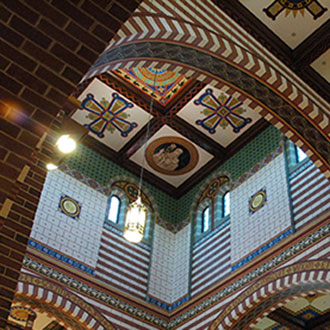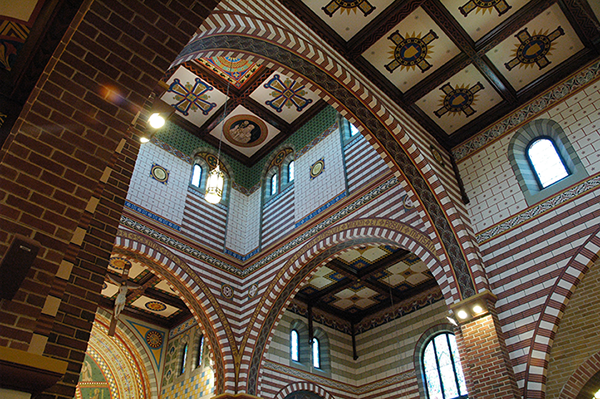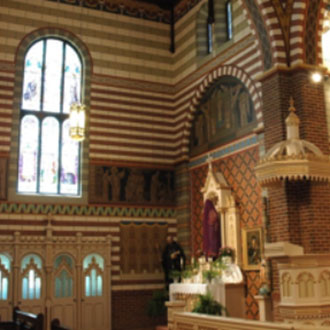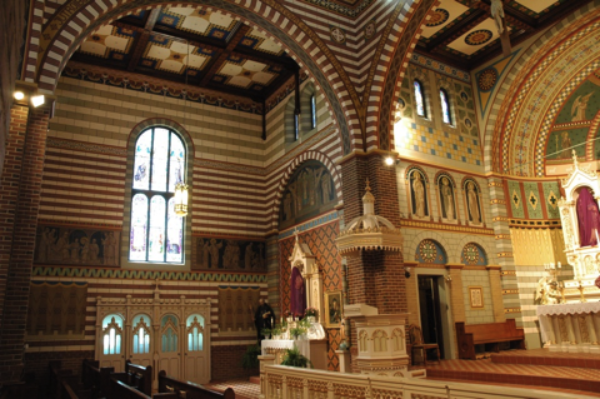Restoration of St. Peter’s Catholic Church
St. Peter's Catholic Church | Lindsay, Texas | 76250 | 940-668-7609 | http://www.stpeterlindsay.org
One of the largest buildings in Lindsay, St. Peter’s Church is a 1918 reconstruction of the first brick chapel dedicated in 1903. The original building was ravaged by a tornado that left only remnants of the sanctuary and tower intact. These remaining elements were incorporated into the 1918 design, and almost 100 years later, the 6,300 sf church was again in dire need of restoration. The poor condition of the roof had caused leaks that began in the eves and penetrated all of the load-bearing brick walls, causing significant damage to both interior and exterior.
The Architects engaged skilled contractors and craftsmen to help restore the building. To repair the roof, the clay tiles were removed so that the deteriorated wood decking could be replaced and sealed with a proper waterproofing membrane. The tiles were then put back and any damaged pieces were replaced with Ludowici mission tiles. All of the brick was repaired and repointed as necessary. Stained-glass windows were removed and carefully restored at the conservator’s shop. They were re-installed and then protected with new exterior clear glazing set in anodized aluminum frames with vents at top and bottom.
The interior ceilings and side walls consisted of three-coat plaster adhered directly to the brick walls. Loose and damaged plaster was repaired and restored as necessary. The painted interior was executed by Swiss artist Friedolin Fuchs, during WWI on the plaster walls, wood beams and ceilings. Experienced artists and conservators created stencils of all painted work and duplicated the original design on the fresh surface of the restored plaster. The church also contained 32 paintings on canvas by several artists. The canvases mounted with conventional wallpaper paste or other organic adhesives were easily removed and restored. Others were installed with a very potent 19th century adhesive and could not be removed. After extensive research by the Architect, the team successfully drilled into the plaster and injected a special adhesive mixture, tightening the plaster and making removal of the canvasses unnecessary. The final result is a stunning, fully restored, polychromatic interior.




